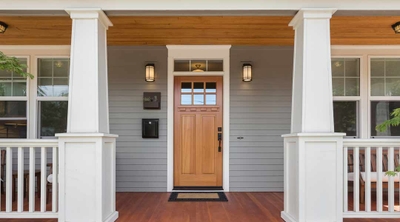What is a sewage pump system?
3 min read
Sewage pump systems push waste from below-grade areas, such as bathrooms, kitchens, or laundry rooms, to the main sewer line at street level. You might also use a sewage pump system when long sewer lines don’t have a proper fall to the main line. We spoke with Gregg Cantor, president and CEO of Murray Lampert, Design, Build, Remodel, for more details on how they work, the types available, and how to install one.
How does a sewage pump work?
A sewage pump — also known as an ejector pump — has a tank or basin that collects sewage from your home. When the waste reaches a certain level, the pump turns on and pushes it uphill to your home’s main sewer line. Then gravity takes over, and the sewage flows to the city line on the street or a septic tank. If a pump fails, a warning light comes on, so you don’t continue using the affected bathrooms, causing waste and water to back up in your home.
Residential sewage pumps can have a one or two-tank system. If you have two tanks and one fails, the other kicks on and keeps pumping. According to Cantor, a one-tank system is sufficient for most single-family homes. Duplexes or multi-family units typically use two-tank systems.
Learn more about how to protect your home from water damage and when homeowners insurance covers water backup.
What are the different types of sewage pumps?
There are two main types of residential sewage pumps used in homes — ones with a grinder and ones without. Having a grinder is like having a garbage disposal in the pump. It crushes waste that would normally clog the line, leading to a backup and water damage, which your home insurance may not cover. But grinder pumps are more expensive and may not be necessary for most homeowners. “In a perfect world, if you had a pump and didn’t overdo it with toilet paper [or] throw foreign matter down the drain, the pump without the grinder would work fine,” Cantor says.
According to Cantor, grinder pumps may be a good option for rental properties where people throw things in the toilet that they shouldn’t. However, if your builder hooked your sewage pump system up to a septic tank, you want to avoid grinder pumps. Septic systems separate solid waste (which remains in the tank) from liquid waste (which leaches into the ground). When the grinder has ground everything up, the solids and liquids don’t separate.
Whether you choose a pump with or without a grinder, homes with more users and below-grade toilets need a better-quality pump with higher horsepower. Cantor notes that selecting a model with a warranty from a respected manufacturer is important.
How do you install a sewage pump?
You may want to consult a professional to ensure your sewage pump system is installed correctly and to code. Since the plumbing and electrical are part of the process, you may need permits and city inspections for your home. Follow these steps to install a sewage pump:
- Dig a pit in the basement or outside for the pump.
- Drop the sewage pump into the hole.
- Hook up the pump to the sewer line.
- Run a wire from the electrical panel to the sewage pump. It should have a dedicated circuit breaker so it doesn’t stop working if a different circuit trips.
- If you have a home generator, hook the sewage pump up to the generator to have working bathrooms if the power goes out.
Now you know what a sewage pump system is, how it works, and when it might be time to call in a professional if something goes wrong. You may also want to learn more about the different types of water pumps and how they protect your home from water damage.






